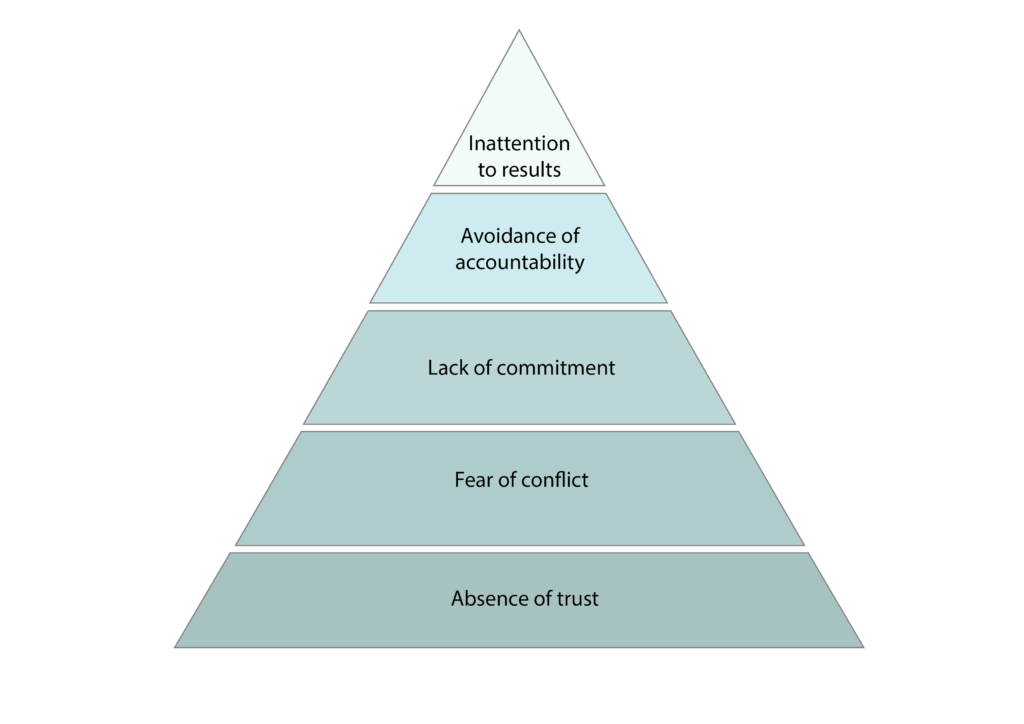Given that there is ‘nothing is as practical as a good theory’ (Kurt Lewin) we thought it might be helpful to round off our current foray into re-thinking teamwork with a few of the more common models that have been developed to help explore team effectiveness.
We are not suggesting that these are perfect, by their nature they are summarising complex issues, but maybe one or two will be helpful. We’d really encourage you to look at them with some healthy scepticism and don’t be afraid to critique them. Consider:
- What resonates with you?
- What might be missing?
- How relevant is it to your circumstances?
- What works well about it?
- What would improve it?
- What are its underlying assumptions?
The GRPI model of team effectiveness (Rubin, Plovnik & Fry, 1977)

This model outlines four areas that a team needs to be effective:
- Goals: well defined intentions and anticipated achievements, priorities and expectations are agreed and communicated
- Roles: well defined areas of responsibility
- Procedures: well defined procedures and decision-making processes
- Interpersonal relationships: good team dynamics built on trust and flexibility
The Team Effectiveness Model (Katzenbach & Smith, 1993)

This model sets out three team deliverables at each of its points: collective work products, performance results and personal growth. In order to achieve these deliverables the team needs:
- Commitment: which is based on shared goals and meaningful purpose
- Accountability: based on individual and collective accountability
- Skills: including both technical and social skills
The T7 model of team effectiveness (Lombardo & Eichinger, 1995)

This model divides effectiveness into five internal and two external factors.
Internal:
- Thrust: a common purpose
- Trust: shared trust across the team
- Talent: skills to do what is needed
- Teaming: able to function as a team
- Task: the ability to execute the necessary tasks
External:
- Team leader fit: how well the team leader works with the rest of the group
- Team support from the organisation: how well the organisation facilitates the activities of the team
The Five Dynamics of Teamwork and Collaboration (LaFasto & Larson, 2001)

- Being a real team: requires a clarity of boundaries. Team members are interconnected and membership is usually relatively stable
- A compelling direction: clear, realistic yet challenging goals that motivate team members
- An enabling structure: ensuring that structure and processes support the activities of the team and the organisation
- Having a supportive context: an enabling and supportive context that ensures the team has the resources, co-operation and information it needs
- Expert coaching and guidance available to the team: providing teams with access to independent monitoring or coaching support
The Five Dysfunctions of a Team (Lencioni, 2002)

The Lencioni model focuses on the core dysfunctions that can occur within a team. These include:
- An absence of trust
- Fear of conflict
- Lack of commitment
- Avoidance of accountability
- Inattention to results
A snapshot
This is very much a snapshot of some of the more common team effectiveness models. The references below give you the opportunity to follow them up further if you are interested. I think it’s likely we will also be covering them in more detail in the coming months. In the meantime don’t be afraid to try them out, adapt them and design your own. If you do create something new it would be great if you could share it with us!
References:
Katzenbach, J. R., & Smith, D. K. (1993). The wisdom of teams: Creating the high-performance organization. Boston: Harvard Business School Press.
LaFasto, F., & Larson, C. (2001). When teams work best: 6000 team members and leaders tell what it takes to succeed. Thousand Oaks, CA: Sage.
Lencioni, P. (2002). The five dysfunctions of a team: A leadership fable. San Francisco: Jossey-Bass.
Lombardo, M. M., & Eichinger, R. W. (1995). The Team Architect® user’s manual. Minneapolis, MN: Lominger Limited.
Rubin, I. M., Plovnick, M. S., & Fry, R. E. (1977). Task oriented team development. New York: McGraw-Hill.

